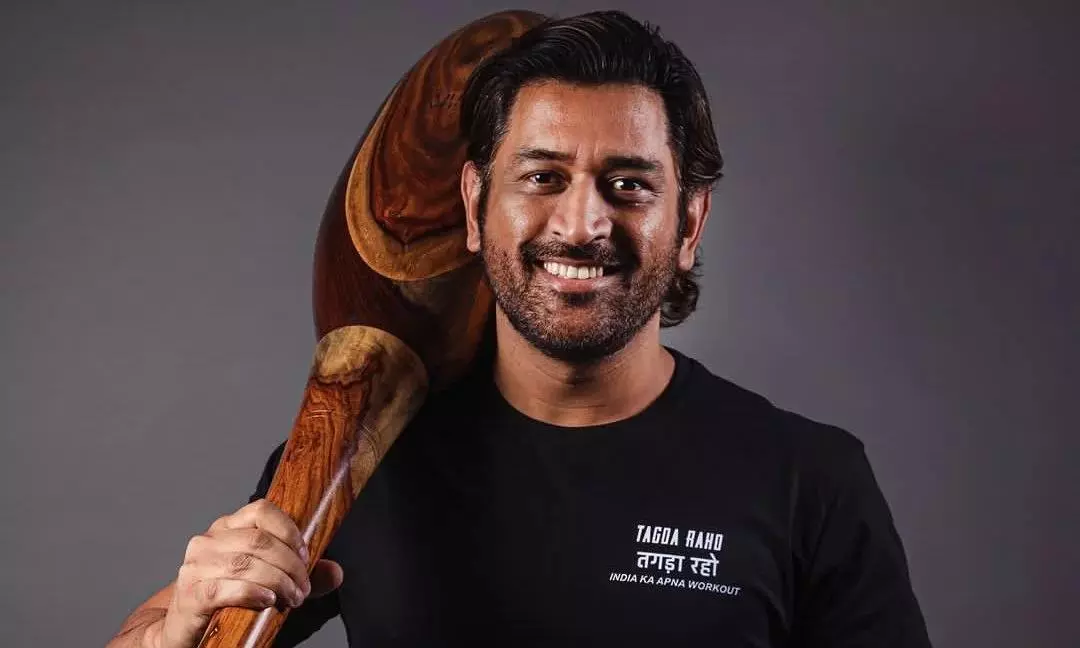Fitness
Fitness Sways the Desi Way

Be it home-yoga over hitting the gym or choosing homemade food options instead of high-protein fancy diet meals, there seems to be a flux towards traditional Indian fitness regimes. An increasing number of people are captivated by the benefits of desi strength training which is deeply rooted in Indian tradition and culture. A mantra ingrained by Indian wrestlers, enthusiasts, and warriors through the ages.
Star sportspersons like Suresh Raina, MS Dhoni, rock climber Gowri Varanashi and celebs like Milind Soman, and Ankita Konwar have sworn by the benefits of earth-digging, rope climbing, and different forms of exercises and body strengthening techniques with the Hanuman Gada, Mudgar, and Vajra to name a few. “Not everyone likes going to a gym to sit on machines,” says Rishabh Malhotra, Founder of Tagda Raho, Bengaluru. Rishabh sheds light on how open gyms, traditional exercises or even home gyms help people get stronger, not just individually but as a nation. “In a city like Bengaluru, people engage in 3-4 activities throughout the week. Be it yoga, running, hitting the gym, Tagda or even cycling.”
DESI EXERCISE
Bruce Miranda, Co-Founder, Be Fit Marathon Training Academy says people today are interested in trying various forms of exercises rather than just sticking to conventional gyms.
Bruce says, “Working out from home during the pandemic gave a lot of people the chance to have new experiences — yoga, animal flow, calisthenics, strength training without equipment, the list goes on.” Many people have ditched running shoes and prefer running barefoot. Bruce says
trends are easy to influence you.
“They come with challenges. It’s easy to get influenced by watching a reel on Instagram and Facebook but when you do it, there are chances of cuts or tendon injuries,” says Bruce.
While desi forms of exercising have always been a part of Indian culture, their benefits have come out quite strikingly in the past few years. Rishabh shares how ‘Tagda Raho’ has been the first of its kind in India to reintroduce traditional training models in a modern avatar.
He says, “We need more such places for people to access. Akharas and Garadis have some restrictions and hence are unable to grow beyond a point.” He cites the example of how yoga has exploded all across the world today, especially in the last 20 years. He explains how the
Hanuman gada helps perform over 100 movements. Exercises like earth digging and hanuman gada have always been an integral part of India’s training system for centuries. “These are not trends by any stretch of the imagination, but are time tested,” he says, adding, “The
oldest modern-day gym in the world is perhaps 70 or 100 years old.” Rishabh points out the oldest
Garadi, Akhara in Bengaluru alone is over 120 years old. With other parts of India having places as old as 170 years old!
RENEWED SPACES
Madhuri and Sunil Kudva from Elite Fitness-Personal Training Centre, Mumbai say trends and fads come and go. “Any kind of fitness is good for people. People need to do something rather than do nothing at all,” Sunil says. He opines that home gyms are something you can surely enjoy within the comfort of your home. “There are people who work out seriously even at home, but sadly the percentages are low,” he adds.
Shivangi Sarda, Marathoner & Founder-Coach, Fitness Trail says people are opting for home gyms or open gyms as these serve as ‘convenient’ forms of exercising. She says, “You save travel time, (in cities you spend 30-40 minutes commuting). Home gyms are much preferred here.” She speaks of how she has personally witnessed many women opt for such setups.
Shivangi adds that traditional gyms are still very popular. People still enjoy going to gyms, interacting with people, being a part of a larger community and following a routine.
RUSTIC WORKOUTS
It is true that desi forms of exercises like earth digging, hanuman gada, stone dumbbells have all found their space in modern-fitness centres today.
Indians have moved on from just exercising on machines to more swift, desi notions of exercising.
Rishabh says, “The future of fitness in India will be defined by many factors — functionality, sports and holistic formats.” These don’t necessarily box you into weightlifting categories alone! While fitness as a whole continues to evolve and witness changes, the pertinent question is could comparable results still be achieved via simpler, more desi forms of exercising? Only time and a little desi exercising will reveal this soon!










